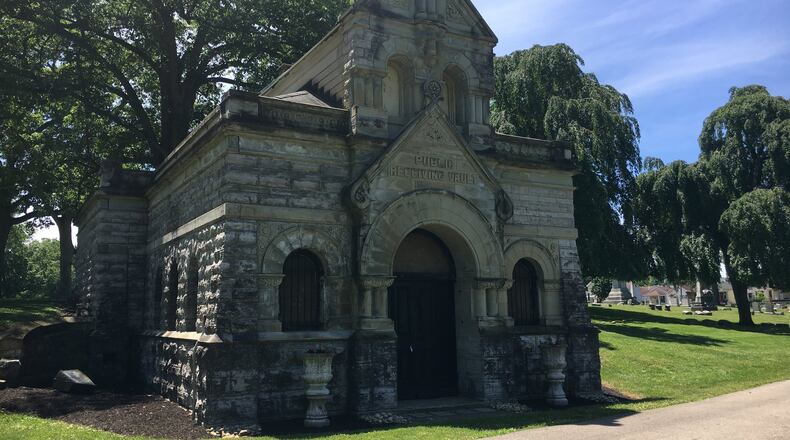“The public vault actually came about because of people not being able to bury people at the time,” Carmack said. “Let’s say the weather got really bad, it was really cold, icy out, in order for people to keep a body from being decomposed, they would put them in a cellar, and they would bring ice in and pack it around the body.”
Men who served as Civil War soldiers for the Union and Confederacy both are buried at Greenwood Cemetery, which was added to the National Register of Historic Places in 1994. Also in the cemetery are soldiers from the American Revolution. They were moved from other local burial places and reburied.
“A lot of our veterans, all in general, throughout all the wars, were brought home and put in these vaults because they had to take and get ahold of the families,” she said. “And, of course, when they were bringing these men home, they were bringing five or six at a time.”
The building also stored some bodies of the dead from the Great Miami River Flood of 1913.
“Someday, Greenwood Cemetery would like to restore that building, because it’s so unique, and so beautiful,” David Shanteau, consulting general manager for Greenwood, recently told this media outlet. But funding isn’t now available, he said. “It’s probably one of the oldest buildings in the city of Hamilton.”
“Your vault has been there, and has really served its purpose in many ways,” Carmack said.
Beautiful tiles inside the building need to be replaced in the building that is locked at all times.
“I would love to see it brought back to its original state,” Carmack said of the hallowed structure.
“I guess you could say, in a sense of speaking, it’s a monument,” she said. “I think if they do renovate this, and they renovate it to where the public could go in and they could see, I think it would be absolutely phenomenal. I really believe that people will take a major interest in it, because, one thing, the building’s so old…. It went through so much itself, just like the people did, and it still withstood all of that.”
“I think it would be great,” she said. “It would be fantastic.”
It also could be a good educational tool for school history classes, and young historians, she said. Aside from the building’s purpose itself, it also could be used to teach about the masonry skills used to build it and the tiles inside, which likely were created somewhere in the region, she added.
Meanwhile, the cemetery has burials of military veterans weekly, Shanteau has said.
About the Author
